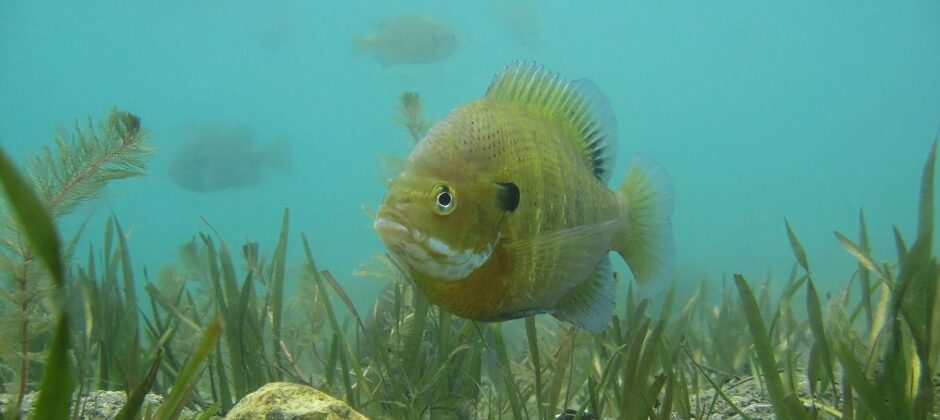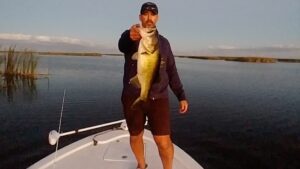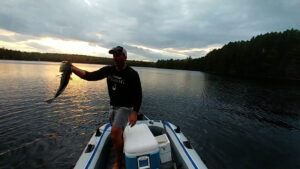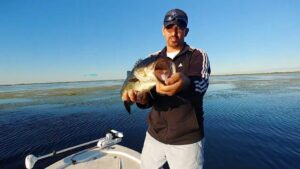Spring
In spring, the spawn dictates their movements. Once the bass finish up spawning, the sunfish come in next. Fish the shorelines and the bays around hard bottom and you should find plenty of sunfish once they move into the shallows. Before they move into the shallows, fish the main and secondary points, creek channels leading into their spawning bays and other deep water areas that are close to where they want to spawn.
Spawning Sunfish
Sunfish will be spawning in water temperatures between 65 and 75 degrees, although some fish are still spawning when the water is as high as 80 degrees. To give you a good idea for when to find these spawning fish, it will happen a couple of weeks after the bass. If you see lots of bass on the beds, it is too early, but it will start very soon.
Catching spawning sunfish is by far the easiest type of fishing. Males attack anything that comes near the nest and females feed throughout the spawn. Anglers have been known to catch the same fish 2 or 3 times within minutes. Cast a small worm in the beds and you will catch fish all day. Most sunfish spawn in just a couple feet of water, however, in clear lakes they can found spawning in water that is 10 to 15 feet.
Summer
In the summer, there will always be some fish shallow, but the better fish will go deeper. Plan on fishing anywhere from 10 to 30 feet of water depending on the lake and it won’t always be around cover. Sunfish will roam open water too. However, weeds and wood will usually hold some fish. They will often suspend 10 to 20 feet down depending on the lake in the summer time, so use your electronics to find these schools of fish.
Fall
Fall can be an awesome time to fish for sunfish. A lot of these fish will move back into the shallows, but plenty of fish will stay deeper too. If the lake has weeds, you can fish the deep weed edges all the way until the end of fall.
Winter
Winter is a lot tougher on anglers up north. You will have to break out the ice fishing gear for them. Sunfish continue to feed all winter, but for some people, it’s a lot of work to catch these fish. Down south, you can catch sunfish all winter. Just plan on fishing more like it’s a late fall pattern all winter.
Bluegill can easily be caught throughout the winter, however, catching bigger bluegill is not so easy. To catch big bluegill consistently, you have to find some lakes and/or ponds that have big bluegill. Many lakes and ponds will have mostly small bluegill and that’s what you can expect to catch. Check the local fishing reports, call your bait and tackle shop, search online for fishing reports and keep track of what lakes produced bigger bluegill during the open water season.
In the winter, bluegill will typically school up near weed beds. During early winter, you can find bluegill in the same places that you found them during the end of fall. As winter progresses, bluegill will move deeper. The keys to catching bluegill through the ice is finding weeds, moving frequently to find active fish and using small ice fishing jigs tipped with live bait. Bright jigs typically work better. Red and green jigs work well, especially when you tip them with wax worms and spikes.






